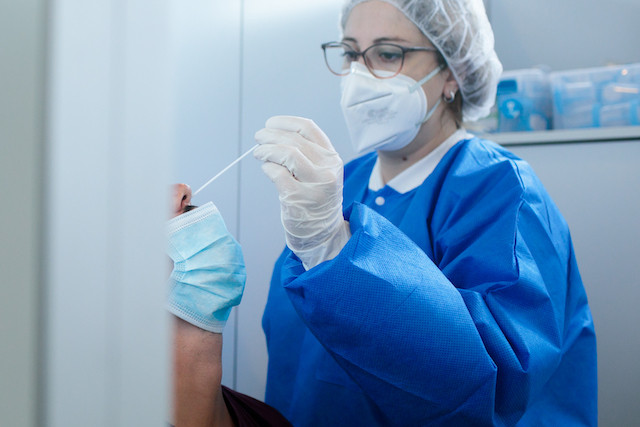During the week of 5 to 11 October, the number of positive covid-19 cases in Luxembourg rose 47% to 806, giving an incidence rate of 129 positive cases per 100,000 inhabitants over seven days. At the same time, six patients died. The victims had an average age of 82-83 and reportedly suffered from existing health complications.
“We’re in stage two,” Paulette Lenert (LSAP) said in a televised conference on Wednesday. “We’re not in the same situation we found ourselves in spring where from one day to the next patients have acute symptoms that we must treat.”
Only when the country passes to stage 3 in its response strategy, would activities in the health sector be limited to prioritise covid treatment, the minister said.
Contact tracing
The increase of cases has resulted in more work for manual contact tracers in Luxembourg. From the week of 5-11 October, the number of contacts rose sharply by 50% to 6,868. Lenert said she had found an agreement with the defence ministry so that the army could provide support for analysing this data. To make the entire process quicker, the minister urged the public to keep a record of people they had been in contact with without a mask.
Testing log jams
Lenert lamented a trend for people requesting a covid-19 test without prescription, placing further strain on infrastructure. “This should not be used as a preventive measure,” the minister said, explaining that only people with symptoms who seek a prescription should get tested, unless they form part of the second phase of the targeted large-scale testing. In the coming weeks teaching staff at crèches will be invited to get tested under this programme.
Luxembourg conducted 39,651 tests during the week of 5-11 October, up from 38,735, still well below the 53,000 capacity. This was because not everyone invited to take a test had done so.
Rapid testing
The government on Wednesday approved a grand ducal (administrative) rule to use rapid testing kits, capable of giving a result within 15 minutes. These will be used in a targeted way for certain health professionals, the minister said. She added that they were most effective for people with symptoms.
Age of infected
According to government figures, the average age of people contracting the illness decreased slightly to 36.8 years compared to 37.6 years the week before. The 15-29 age group was the most affected, with an incidence rate twice as high as the rest of the population. There was also a fairly sharp increase in incidence among persons aged 60-74 and 75 and over. Nevertheless, there was a recent increase for all age groups. At present, the incidence rate is over 50 per 100,000 for all age groups.
Source of new infections
The biggest source of infection was family, accounting for 25% of infections, while education accounted for 12% (up from 7% the week before) and leisure 3% (up from 1%). The number of infections from travel abroad is falling, from 13% to 7%. Work accounted for 5% of cases (from 8%), childcare 3% (from 5%), 2% from shared accommodation (from 3%) and 3% to gatherings of family or friends (from 2%).
